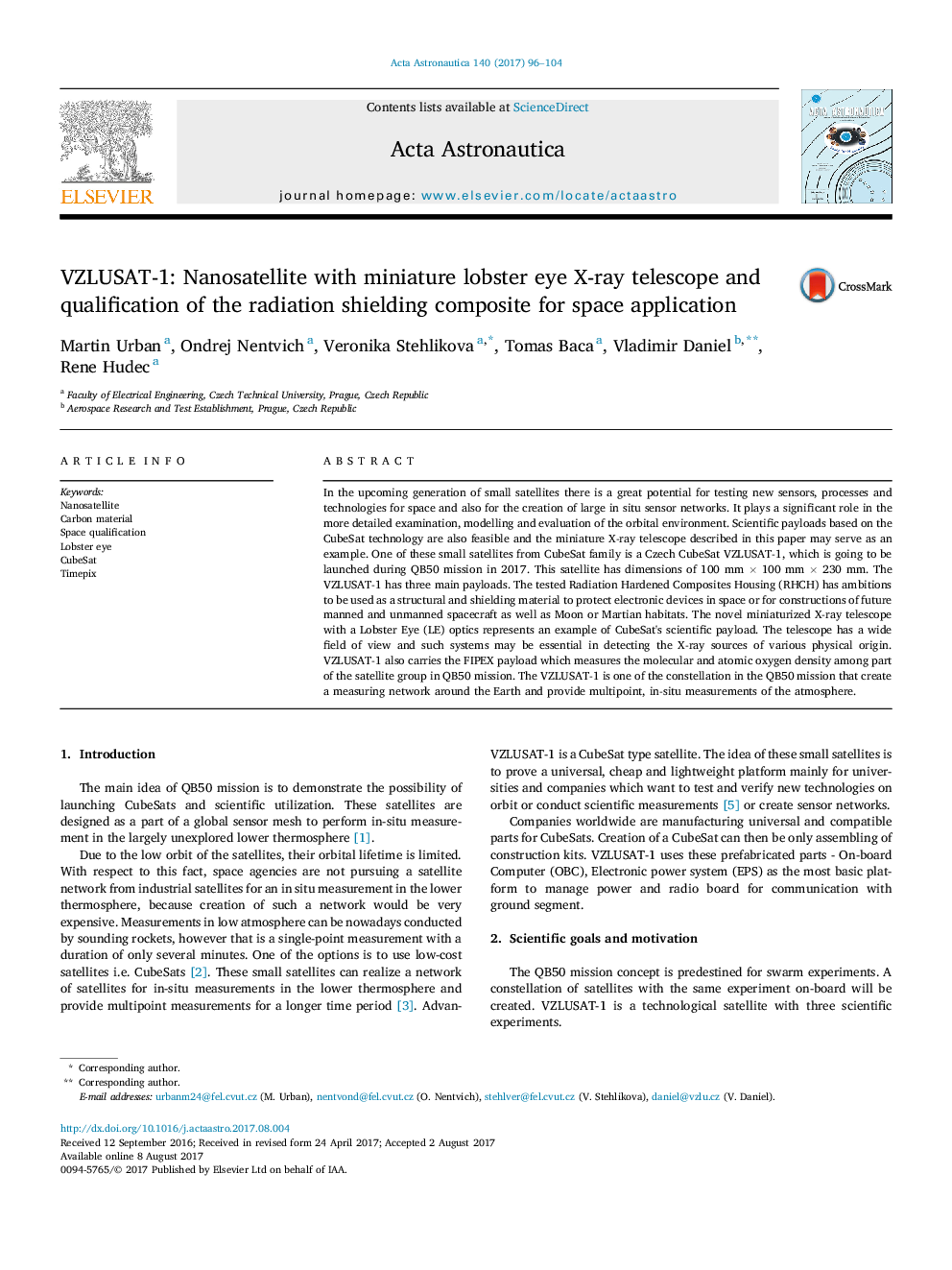| Article ID | Journal | Published Year | Pages | File Type |
|---|---|---|---|---|
| 5472100 | Acta Astronautica | 2017 | 9 Pages |
Abstract
In the upcoming generation of small satellites there is a great potential for testing new sensors, processes and technologies for space and also for the creation of large in situ sensor networks. It plays a significant role in the more detailed examination, modelling and evaluation of the orbital environment. Scientific payloads based on the CubeSat technology are also feasible and the miniature X-ray telescope described in this paper may serve as an example. One of these small satellites from CubeSat family is a Czech CubeSat VZLUSAT-1, which is going to be launched during QB50 mission in 2017. This satellite has dimensions of 100 mm Ã 100 mm Ã 230 mm. The VZLUSAT-1 has three main payloads. The tested Radiation Hardened Composites Housing (RHCH) has ambitions to be used as a structural and shielding material to protect electronic devices in space or for constructions of future manned and unmanned spacecraft as well as Moon or Martian habitats. The novel miniaturized X-ray telescope with a Lobster Eye (LE) optics represents an example of CubeSat's scientific payload. The telescope has a wide field of view and such systems may be essential in detecting the X-ray sources of various physical origin. VZLUSAT-1 also carries the FIPEX payload which measures the molecular and atomic oxygen density among part of the satellite group in QB50 mission. The VZLUSAT-1 is one of the constellation in the QB50 mission that create a measuring network around the Earth and provide multipoint, in-situ measurements of the atmosphere.
Related Topics
Physical Sciences and Engineering
Engineering
Aerospace Engineering
Authors
Martin Urban, Ondrej Nentvich, Veronika Stehlikova, Tomas Baca, Vladimir Daniel, Rene Hudec,
